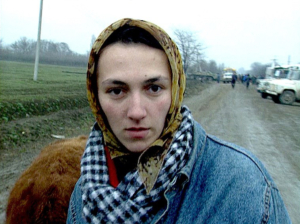Character, like a photograph, develops in darkness.
– Yousuf Karsh[1]Yousuf Karsh, quoted in Hank Whittemore, ‘Yousuf Karsh, Photographer: The Legend Who Captures Legends’, Parade, 3 December 1978, cited in James B Simpson, Webster’s II New Riverside Desk Quotations, Houghton Mifflin Company, Boston, MA, 1992, p. 232.
Originally conceived as a storytelling device to treat deep psychological wounds,[2]This narrative technique attempts to ameliorate a trauma response (that is, overwhelming and/or unprocessed thoughts and feelings) by creating order and meaning through the therapeutic process of storytelling. The trauma narrative thereby exposes traumatised individuals to painful thoughts and feelings in a relatively safe (that is, controlled and regulated) environment. See David Denborough (ed.), Trauma: Narrative Responses To Traumatic Experience, Dulwich Centre Publications, Adelaide, 2006. trauma narratives have become something of a social contagion.[3]See Lexi Pandell, ‘How Trauma Became the Word of the Decade’, Vox, updated 25 January 2022, <https://www.vox.com/the-highlight/22876522/trauma-covid-word-origin-mental-health>, accessed 15 September 2022. The more prevalent they become, the more we risk pathologising normal emotional responses to adverse life events[4]See Jessica Bennett, ‘If Everything Is “Trauma,” Is Anything?’, The New York Times, 4 February 2022, <https://www.nytimes.com/2022/02/04/opinion/caleb-love-bombing-gaslighting-trauma.html>, accessed 8 September 2022; and Nick Haslam, ‘Concept Creep: Psychology’s Expanding Concepts of Harm and Pathology’, Psychological Inquiry, vol. 27, no. 1, 2016, pp. 1–17. and how we understand and process our own identities and experiences.[5]See Parul Sehgal, ‘The Case Against the Trauma Plot’, The New Yorker, 27 December 2021, <https://www.newyorker.com/magazine/2022/01/03/the-case-against-the-trauma-plot>, accessed 8 September 2022.
Two outstanding recent television adaptations, My Brilliant Friend (from Elena Ferrante’s Neapolitan novel series) and Pachinko (from Min Jin Lee’s novel of the same name), both provide an antidote to dominant contemporary representations of trauma and return us to the notion of the trauma narrative as coping mechanism. While the two television shows are very different, they may nonetheless be considered in parallel. The theme of boundary dissolution (the experience of the self no longer being psychologically distinctive or delineated[6]See Ellen Jackson et al., ‘Cultural Variation in Reports of Subjective Experience of Parent–Child Boundary Dissolution Among Emerging Adults’, Journal of Family Issues, vol. 37, no. 5, April 2016, pp. 671–91.) is common to both narratives,[7]The term ‘dissolving boundaries’ – also the title of Episode 4 of Season 1 – is explicitly used by Ferrante to describe physic disturbances in Lila. See, for instance, Elena Ferrante, The Story of the Lost Child,trans. Ann Goldstein, Text Publishing, Melbourne, 2015, p. 371. as is that of adaptation – specifically, the adjustment to environmental conditions via the development of more functional traits and porous selves. The two series’ female characters survive misfortune and hardship because they refuse to see themselves as virtuous, helpless victims.[8]See Jillian J Jordan & Maryam Kouchaki, ‘Virtuous Victims’, Science Advances, vol. 7, no. 42, 15 October 2021, available at <https://www.science.org/doi/10.1126/sciadv.abg5902>, accessed 8 September 2022. The narratives of My Brilliant Friend and Pachinko are instead sites of recovery and resilience, in that their female protagonists are characterised by their ability to withstand adversity and actively adapt to hostile social environments. Nonetheless, My Brilliant Friend and Pachinko are not so much narratives of triumph or uplift as tales of the difficulty of escaping cycles of abuse and oppression, and of the connections that can be forged through these shared traumas.
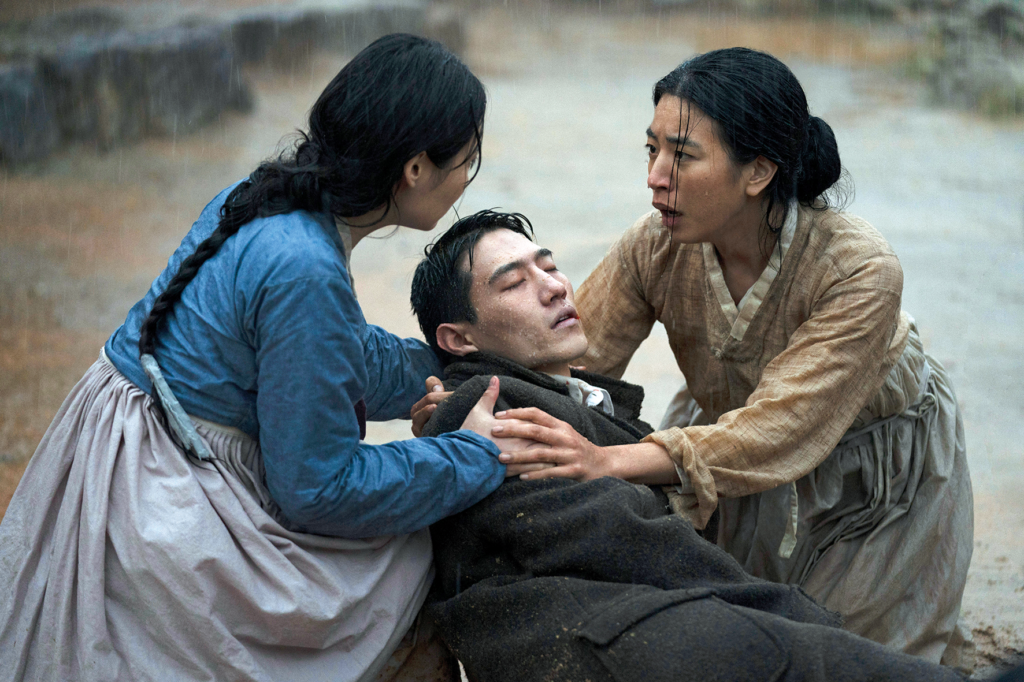
A tangled knot
Narrated from the perspective of an elderly Italian woman, Elena (played by Elisa del Genio and Ingrid del Genio as a child, Margherita Mazzucco as a teenager and young woman, Elisabetta De Palo in old age, and Alba Rohrwacher[9]Rohrwacher has also been cast as Elena in the (at the time of writing) yet-to-be-filmed Season 4. in voiceover), My Brilliant Friend is structured as a flashback that unfolds chronologically over six decades, from the 1950s to the 2010s. As its title suggests, however, the series is about two women’s intertwined stories, or how Elena and her childhood friend Lila (played by Ludovica Nasti as a child and Gaia Girace in adolescence and young adulthood) remain inexorably bound to each other in spite of their very different temperaments and trajectories. Although the two main characters are portrayed by multiple actors across distinct life stages, it is their childhood, adolescent and early-adulthood experiences that figure most prominently in the first three (of a planned four) seasons.[10]The series is named after the first of four books published by Ferrante between 2012 and 2015 – specifically, My Brilliant Friend, The Story of a New Name, Those Who Leave and Those Who Stay and The Story of the Lost Child – and is similarly divided into four seasons. Nonetheless, the author has made it clear that the four books constitute a single novel. See Jenny Turner, ‘The Secret Sharer’, Harper’s Magazine, October 2014, <https://harpers.org/archive/2014/10/the-secret-sharer-4/>, accessed 16 September 2022. The lower-class neighbourhood within Naples where they grow up will maintain a lifelong hold over both women, even if one of them is ultimately able to escape its proximate grip through higher education.
After Lila does what she always threatened and mysteriously disappears … Elena responds with an act of defiance and betrayal: unwilling to let her best friend go, she attempts to preserve the memory of their friendship through the therapeutic process of storytelling.
As the series progresses, we bear witness to what binds these two women together: the violent hierarchies and codes of male authority.[11]See Elena Ferrante, ‘Elena Ferrante: “Even Today, After a Century of Feminism, We Can’t Fully Be Ourselves”’, The Guardian, 17 March 2018, <https://www.theguardian.com/lifeandstyle/2018/mar/17/elena-ferrante-even-after-century-of-feminism-cant-be-ourselves>, accessed 8 September 2022. Elena’s trauma narrative, however, begins with an instance of hermeneutic violence: the moral injury she is inflicting on Lila by recounting the latter’s story and refusing her desire for erasure. After Lila does what she always threatened and mysteriously disappears, removing all traces of her existence in the process, Elena responds with an act of defiance and betrayal: unwilling to let her best friend go, she attempts to preserve the memory of their friendship through the therapeutic process of storytelling.
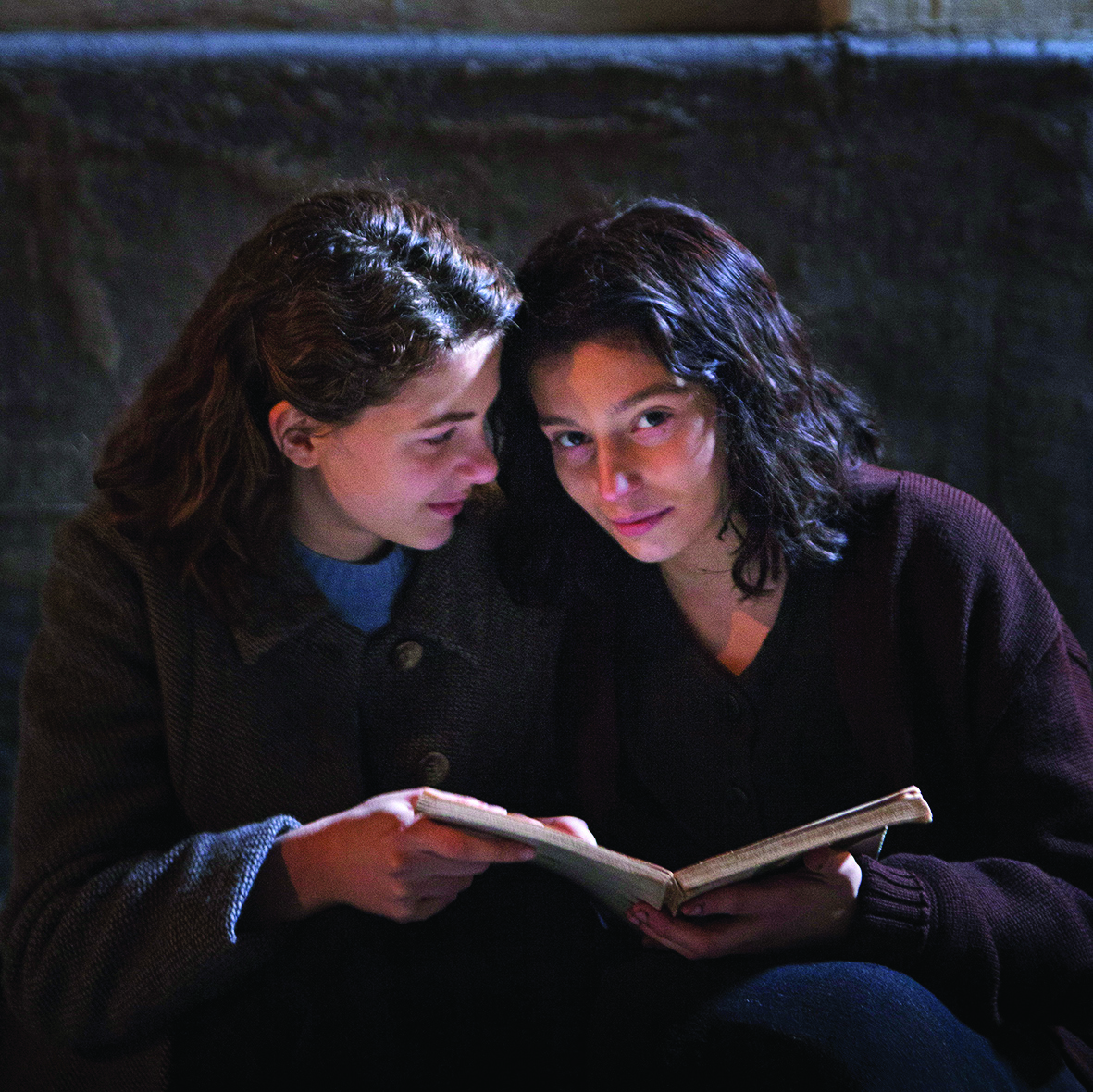
As an angry Elena prepares to organise her thoughts and feelings, the spectral figure of a young Lila appears in her Turin apartment and looks at her accusingly from across time, defying the elderly woman to derive value or meaning from shared life experiences. So, even before we are taken back in time and the story proper begins, we are immediately alerted to the fact that My Brilliant Friend is not going to be an exercise in nostalgia or hagiography but, rather, an attempt at exorcising the demons that haunt two troubled women.
We are subsequently transported back to a classroom in elementary school. My Brilliant Friend thereby delineates its themes, characters and boundaries from the outset, brilliantly using the first-grade classroom to lay bare the hardships awaiting its protagonists. Class conflict and sexual inequalities are already writ large here: the classroom becomes a site of social competitiveness and gender hierarchy. Social mobility is theoretically earned by moving up a class at school, but Elena and Lila quickly learn that any movement will be constrained by the unwritten rules of the two systems working to keep them down: patriarchy and capitalism.
Elena’s first rude awakening to this reality occurs when she is upstaged by Lila in class. As Elena is being publicly praised for having drawn neatly arranged lines, an unruly and dishevelled Lila draws adverse attention to herself by disrupting the class. When the teacher goes to punish the latter for another classroom transgression, however, she stumbles across an astonishing discovery: Lila has somehow taught herself to read and write. Although Lila will prove to be equally brilliant at arithmetic and creative writing, she makes the mistake of beating the boys in a mathematics competition; as retribution, two sets of boys assault her, but she puts up a good fight in return and refuses to apologise for being smarter than them. This language of violence is shown to have been internalised and normalised by everyone in the neighbourhood – including the women, who often take out their feelings of powerlessness and frustration on one another. If a woman or child appears in public battered, bruised or bleeding, no-one appears to interpret this as a sign of domestic violence or physical assault; rather, such injuries are treated as marks of the victim’s own bad behaviour, or evidence of a hard-learned lesson.
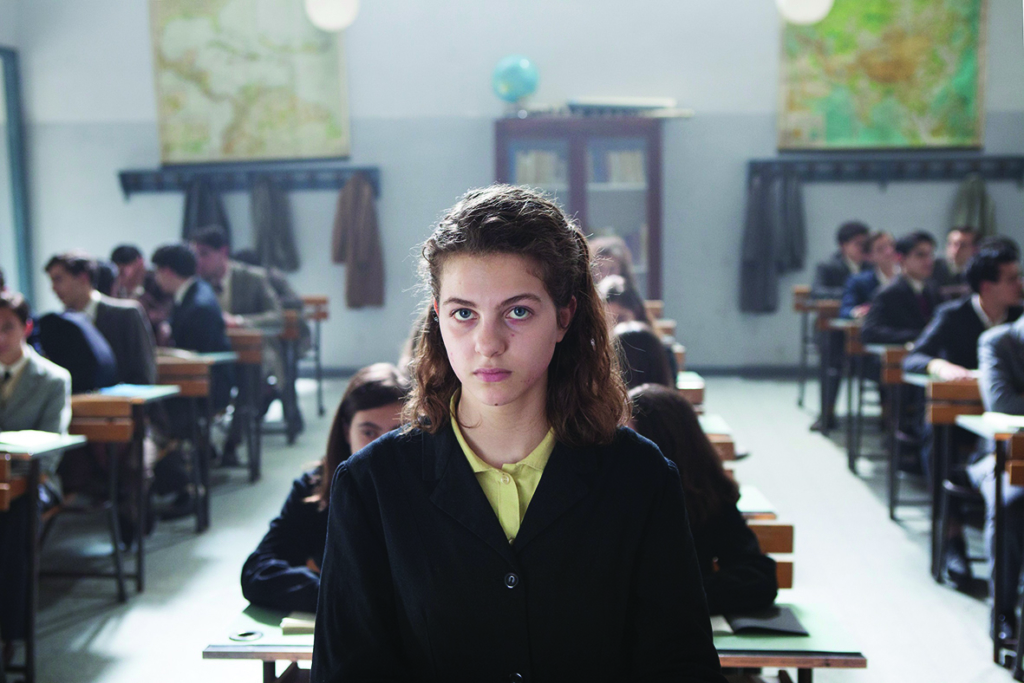
This ever-present threat of violence hangs over the entire neighbourhood, and is used to keep everyone in place. The neighbourhood’s patriarchal rule is nowhere better exemplified than by the two affluent and well-connected Solara brothers, Marcello (Elvis Esposito) and Michele (Alessio Gallo), who patrol the streets in their Fiat 1100 to kidnap poor young women and sexually assault them. An adolescent Lila appears to be the only young woman willing or able to take exception to their reign of terror, and threatens to cut Marcello’s throat when it’s Elena’s turn to ‘go for a drive’. Significantly, both brothers are attracted by Lila’s willingness to openly defy male authority, and seek to woo and pacify the seemingly intractable young woman with their local power and influence.
The blurring of lines between Elena and Lila – a difficulty in seeing where the one begins and the other ends – develops in childhood. The young girls test the limits of their growing attachment to one another by throwing (and thus losing) each other’s cherished doll down a cellar. This seeming loss of discrete identity establishes a mutually dysfunctional attachment style, making it increasingly difficult for each character to delineate their sense of self; they will continue to test the limits of their friendship in order to establish contested boundary lines. Indeed, their roles are subsequently reversed when Elena inadvertently becomes the brilliant friend by being allowed to continue her education without Lila. These two life events become blurred and formative: they appear to have also exchanged lives, and will go on to live vicariously through one another.

One of My Brilliant Friend’s most distressing scenes occurs when Lila is denied the opportunity to proceed on to middle school with Elena: after Lila refuses to take no for an answer, her father, Fernando (Antonio Buonanno), throws her out of a window. During her flight towards the asphalt, Lila starts to experience the sensation of dissolving boundaries – a dissociative state that begins as a self-protective measure and eventually culminates in episodes of terror throughout adulthood.[12]As the novel describes it: ‘The day her father threw her out the window she had felt absolutely certain, as she was flying toward the asphalt, that small, very friendly reddish animals were dissolving the composition of the street, transforming it into a smooth, soft material. But […] she had perceived for the first time unknown entities that broke down the outline of the world and demonstrated its terrifying nature.’ Elena Ferrante, My Brilliant Friend, trans. Ann Goldstein, Text Publishing, Melbourne, 2015, p. 91. Nonetheless, she withstands most of life’s hardships through sheer willpower, and as a consequence the men in Lila’s life remain intent on betraying and exploiting her in order to improve their own social standing.
Although Elena acquires cultural capital through education, her book smarts fail to confer the same social status or value afforded by Lila’s physical beauty. Considered ‘the pretty one’ in earlier life, Elena feels eclipsed once more when Lila transforms into a beautiful young woman and men start competing for her attention – including the opportunistic and predatory social climber Nino (Francesco Serpico), Elena’s object of desire and future husband, with whom an unhappily married Lila has an affair (and possible child). As a consequence of leaving her abusive husband, Stefano (Giovanni Amura), and apparently having a child out of wedlock, Lila is treated as a fallen woman – only to be left in turn by Nino, who seeks refuge in more compliant and socially advantageous women. And although Elena’s upward mobility coincides with Lila’s downfall, her movements within a socially stratified society do not secure her a happy marriage either; she ends up sabotaging her first marriage with academic Pietro (Matteo Cecchi) through her own affair with Nino, abandoning her children to be with him.[13]It is a credit to Ferrante’s writing that she lets us understand what both women see in Nino while simultaneously making us feel frustrated and alarmed by their failure to see through him.
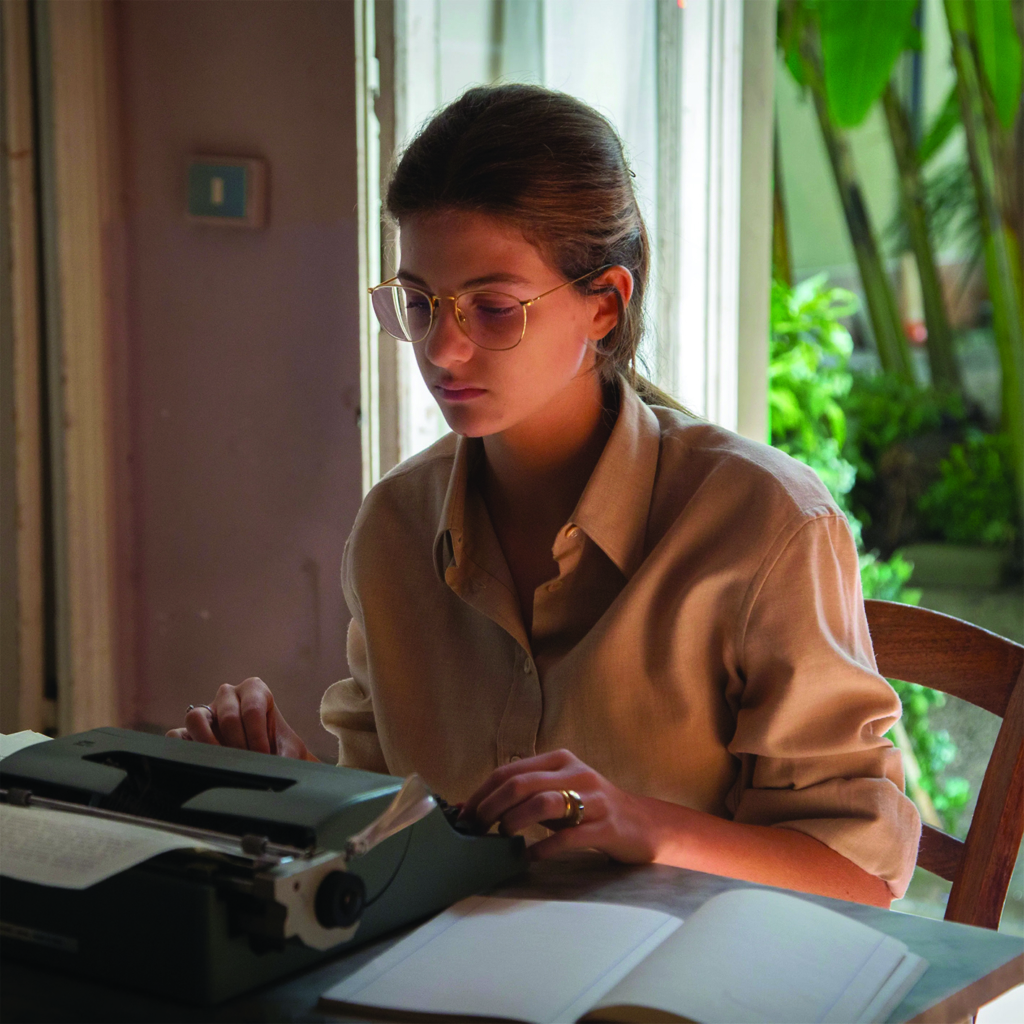
The two different women cheat on their husbands – and, in a sense, on one another – with this same man for similar reasons. Lila is primarily valued for her beauty, and is treated as a mere conquest or trophy wife. She is regularly subjected to marital rape, and is only able to exit her gilded cage by temporarily returning to a life of poverty and ill repute. Elena, meanwhile, discovers that access to education can only take her so far in a patriarchal society, merely leading to oppression within a higher social class; apparently having been chosen solely for her ability to produce intelligent offspring, she is expected to prioritise child-rearing over her own ambitions and goals. For both women, the narcissistic Nino provides an illusory opportunity to escape themselves, each other and their oppressive social bonds. Their experience of falling in love with him enables a dissolution of boundaries – the possibility of merging with another person in order to become completely lost in someone who clearly cares only for himself.[14]Significantly, this theme recurs in an adaptation of another Ferrante novel, The Lost Daughter (Maggie Gyllenhaal, 2021): the film’s protagonist, Leda (Olivia Colman), is an academic who has similarly abandoned her children in order to have an affair. Many years later, she disrupts a mother–child bond by developing a seemingly perverse attachment to a distraught child’s doll and stealing it for herself.
These events occur against a carefully calibrated and interrogated social milieu, and the two women’s characters develop within the darkroom of history – specifically, Italy’s Years of Lead, a two-decade period of social upheaval that often erupted in episodes of terrorism.[15]See ‘Italians Are Still Haunted by the Years of Lead’, The Economist, 27 November 2017, <https://www.economist.com/prospero/2017/11/27/italians-are-still-haunted-by-the-years-of-lead>, accessed 6 September 2022. An increasingly terrorised and traumatised nation thus undergirds Elena and Lila’s shared experience of dissolving boundaries. When all is said and done, the long-suffering (and long-gone) Lila gets to have the last say when she sends Elena an impenetrable and unsettling message in the form of a childhood memory. Consequently, it will be Elena’s trauma narrative that is placed under erasure, calling into question the therapeutic value of her own remembrances of things past.
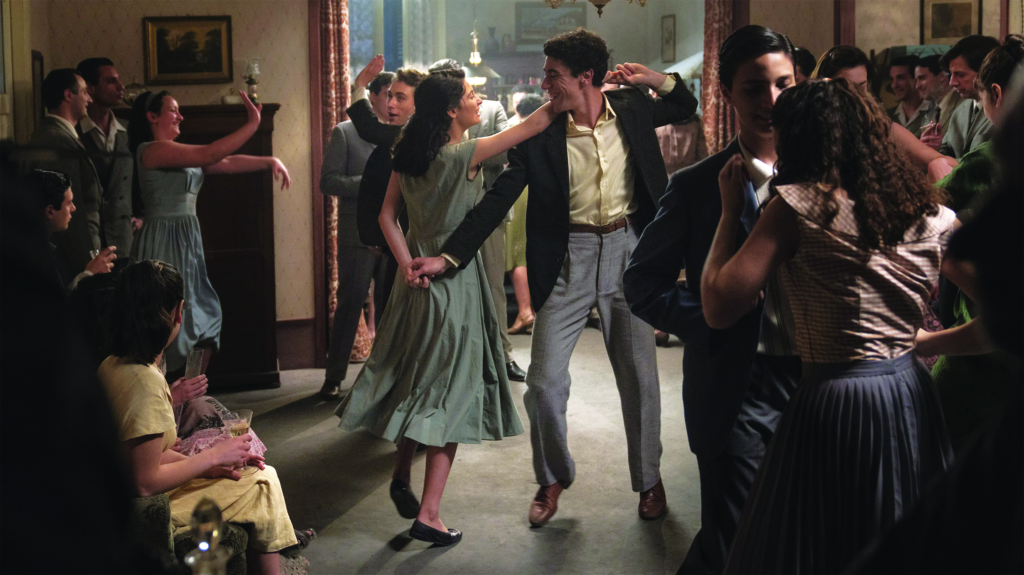
Ties that bind
My Brilliant Friend and Pachinko may be worlds apart, but they share a distinct worldview: women are treated harshly for crossing social boundaries, and suffering is a thread that often binds women together. The main difference between the shows is cultural, in terms of their respective focuses on individualism and collectivism: specifically, My Brilliant Friend complicates the Western embrace of autonomy and/or individuality, while Pachinko prioritises the Eastern tendency towards group cohesion and interdependence. Nonetheless, each series captures a qualitatively distinct experience of one or more characters’ ‘outline of the world’ breaking down as they seek ‘a structure […] capable of containing’[16]Passages from two of Ferrante’s novels: Ferrante, My Brilliant Friend, op. cit., p. 105; and Elena Ferrante, The Story of a New Name, trans. Ann Goldstein, Thorndike Press, New York et al., 2016, p. 548. in its entirety their fractured or displaced sense of self.
Pachinko is distinguished by a narrative built around an experience of cultural erasure and intergenerational trauma. The source of this trauma is history itself: Japan’s annexation of the Korean peninsula in 1910 and Korean women’s subsequent experiences of diasporic existence within an antipathetic Japan. Although ‘history has failed’[17]Min Jin Lee, Pachinko, Grand Central Publishing, New York, 2017, p. 12. its Korean characters by dissolving their experience of a culturally bounded identity, Pachinko is living testament to those Korean women who have endured in Japan (where they are known as zainichi[18]A Japanese term for ‘foreign resident’ that is primarily used to refer to descendants of Koreans who moved to Japan during the years of occupation.) despite their erasure from the historical record.
Pachinko’s central figure is the displaced Sunja, whom we see across distinct life stages: as a hopeful little girl (Jeon Yu-na) with her whole life ahead of her; as a young adult immigrant (Kim Min-ha) seeking to improve her fortune in Japan; and as a long-suffering elderly woman (Youn Yuh-jung) looking back on her life with joy and sorrow. As such, she provides a throughline that spans eight decades, three nations (Korea, Japan and the United States) and four generations in her search for a sense of place and unifying identity. This shared feeling of displacement itself paradoxically becomes a marker of cultural identity and remains an integral part of Sunja’s inheritance; the traumatic experience of boundary dissolution is passed down from generation to generation, providing its own sense of continuity or culturally bounded identity.
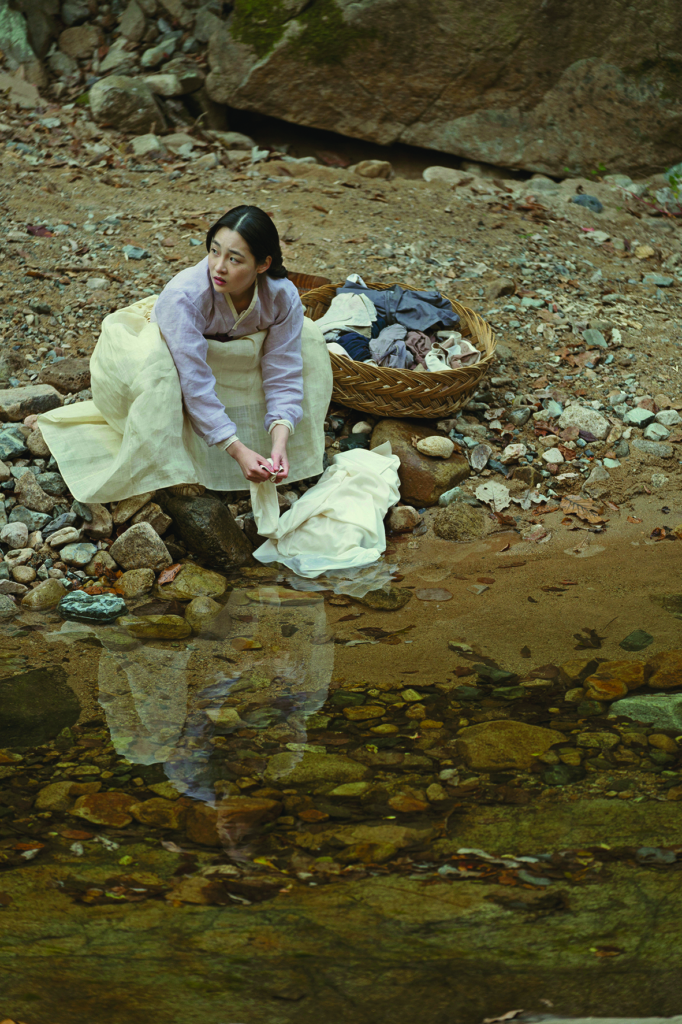
While Lee’s novel and its screen adaptation share many of the same outlines in terms of their world-building, it is worth noting that the latter (at least, in its first of a projected four seasons[19]A second season has been confirmed, and is due to appear in 2023. See Adrienne Westenfield, ‘Pachinko Season 2 Will Be “Heavier,” but Still Joyful’, Esquire, 17 June 2022, <https://www.esquire.com/entertainment/tv/a40310332/pachinko-season-2/>, accessed 8 September 2022.) takes a different approach to the theme of boundary dissolution. Specifically, the novel unfolds chronologically, and its organising principle is an experience of temporality – or the linear progression of past, present and future – as the randomness of events accrues historical import and meaning. The television series changes this sense of accrued meaning by dissolving temporal, spatial and psychological boundaries: it moves back and forth in time so that past, present and future can enter into a meaningful dialogue with one another. Consequently, a relatively minor male character in the novel – Sunja’s Yale-educated grandson Solomon (played by Yoon Kyung-ho as a teenager and Jin Ha as an adult) – is given more prominence and historical precedence. The attempt to facilitate a dialogue between discrete time periods also results in a dissolving of boundaries between ‘female’ and ‘male’ perspectives in Pachinko’s treatment of intergenerational trauma.
This experience of boundary dissolution is perfectly encapsulated in the first episode’s eight-minute opening scene. Pachinko’s editing deploys the first of many dissolves and cuts to transition between seemingly disparate sequences, periods and sensibilities. It begins with Sunja’s pregnant mother, Yangin (Jeong In-ji), visiting a shaman in a pastoral Korean setting in 1915. She is lamenting the ‘curse in [her] blood’; fearful that she might lose another child, she hopes that the spirit world of her ancestors will intervene to preserve their bloodline. We suddenly transition to a young Korean man, Solomon – a fast-rising investment banker whose bubble is about to burst – striding through New York’s skyscrapers in 1989. After he is denied a promised promotion in the Western world, we immediately cut back to Yangin’s time and place in Korea to witness a dance ritual intended to lift the family curse, before returning once more to New York as Solomon convinces his bosses to let him go to Tokyo to finally prove his worth to them. And then we’re back in Korea again, with the shaman declaring, ‘A child is coming. She will thrive, I assure you. And through her, a family will endure.’ The scene is written and shot as if Solomon’s pitch in the future has a rallying-around-the-flag effect in the past – as if Sunja’s grandson is calling his grandmother into being in order to secure his own ancestry and progressive development.
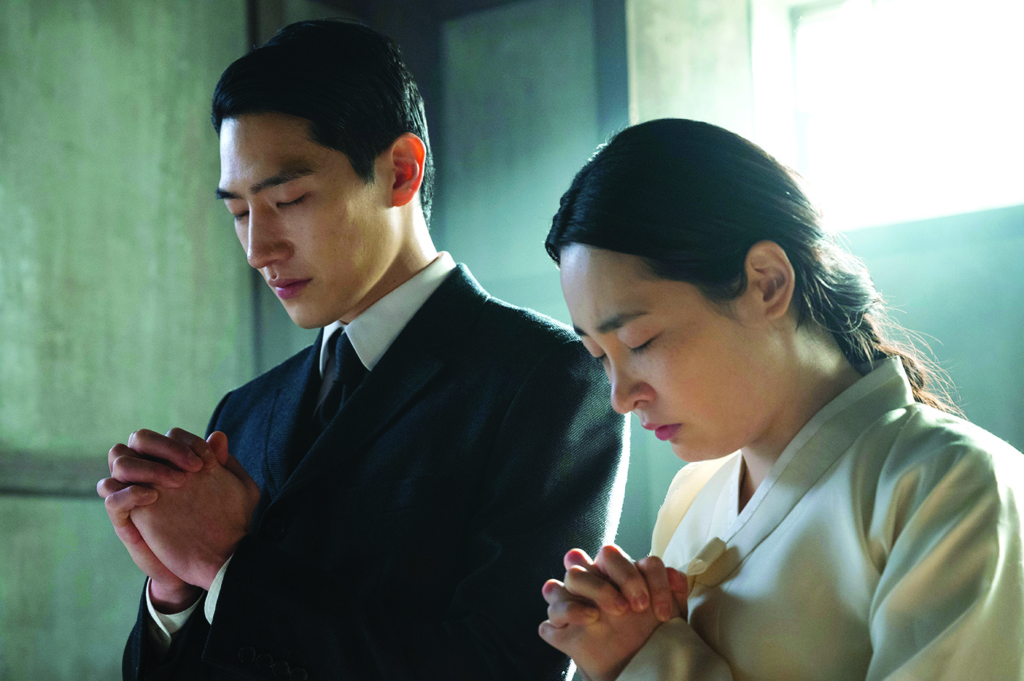
At the time of Sunja’s birth, Japan has already colonised and plundered a shamed Korea. A cherished only child, she is made a solemn vow by her over-protective father (Lee Dae-ho) that he cannot keep: to ‘ward off all the ugliness in the world and keep it far away from you’. He also promises to show her that ‘there is such a thing as kindness in this world’. Unfortunately, when Sunja is thirteen, fate cruelly intervenes and tuberculosis takes him away from her – her first traumatic experience. The second comes in the form of a handsome man old enough to be her father, Hansu (Lee Min-ho), to whom a vulnerable teenage Sunja soon falls pregnant. She is shocked to discover that the Japanese collaborator is also a married man, and that he can only offer her a life as a kept mistress. Having enough self-respect to decline his offer of support, Sunja decides to bear her private shame alone too. Happenstance brings a kindly if sickly minister, Isak (Steve Sang-hyun Noh), to her distraught mother’s boarding house, and, after both women nurse the dying man back to health, he takes it upon himself to marry Sunja. The recovered minister, however, is only passing through, and the newly married couple must leave for Japan – where they (alongside many other Korean immigrants seeking a better life) become second-class citizens in a discriminatory and oppressive society.
On the other side of the century, Solomon is trying to secure an important real-estate deal for the Tokyo branch of his financial institution. The property’s elderly Korean owner, however, is too proud to sell another part of herself to the Japanese, and Solomon finds himself subjected to racial prejudice on both sides of the cultural divide. Enlisting his grandmother to help him close the deal, the increasingly Westernised Solomon unexpectedly finds himself wondering where his own loyalties lie. By this stage, we’ve also entered the pachinko parlour operated by his father – and Sunja’s younger son – Mozasu (Soji Arai): a site of legalised gambling with historical links to organised crime. Mozasu has grown rich trading in luck, and the titular arcade game – a mixture of pinball and slot machines – has paid for his son’s Ivy League education. The rigged machines are also clearly a metaphor for life: of being propelled by the unpredictable forces of chance and ricocheting off the bumpers in the hope of altering life’s ordained trajectories.

Given Pachinko’s intertwined stories and characters, its narrative resists straightforward encapsulation. Its interweaving of storylines and timelines explores the different ways the series’ characters carry the weight of history, as well as how their actions reverberate across time and affect one another. The arc of Pachinko’s history bends towards psychological resilience and an interconnectedness between increasingly adaptable people. Its exploration of boundary dissolution is also, paradoxically, enclosed within the cultural phenomenon of pachinko, with the ubiquitous arcade game having served to not only bring Japanese and Korean people together but also undergird a sense of community and belonging within Japan for the (predominantly) Korean owners of these parlours.[20]See Pradyumna P Karan, Japan in the 21st Century: Environment, Economy, and Society, The University Press of Kentucky, Lexington, KY, 2010, p. 84. Social marginalisation has, ironically, proven to be socially advantageous for some Koreans; because they were denied legal access to other opportunities and occupations, members of the minority group were able to corner a niche and burgeoning market[21]See Steve Rabson, The Okinawan Diaspora in Japan: Crossing the Borders Within, University of Hawai‘i Press, Honolulu, HI, 2012, p. 231. – effectively gaming the system working against them by inhabiting a moral grey area.[22]Although gambling is illegal in Japan, pachinko parlours have been able to navigate a legal loophole by rewarding winners with tokens that can be sold for cash at exchange centres outside. See Phillip Tang, ‘The Big Business of Japan’s Pachinko Parlours’, BBC Travel, 16 August 2012, <https://www.bbc.com/travel/article/20120815-the-big-business-of-japans-pachinko-parlours>, accessed 8 September 2022. But that is a story Pachinko leaves for its subsequent seasons, a preview of which is provided in the series’ opening credits through a dazzling dance sequence set in a pachinko parlour. Here, all versions of Sunja occupy the same time and place as the family celebrate her legacy, offering an expression of resolute gratitude and an exhortation to live in the present moment.[23]The sequence begins with sombre archival footage of Japanese colonisation and occupation before bursting into a colourful dance sequence soundtracked by The Grass Roots’ ‘Let’s Live for Today’.
Pachinko’s first season culminates in an equally empowering dissolution of cultural boundaries: Sunja’s act of culinary diplomacy in preparing a shared cultural cuisine, an age-old means of improving social relations through the universal language of food.[24]See Sam Chapple-Sokol, ‘Culinary Diplomacy: Breaking Bread to Win Hearts and Minds’, The Hague Journal of Diplomacy, vol. 8, no. 2, pp. 161–83. Similarly, when all hope appears to be lost, a younger, destitute Sunja rises to the occasion of supporting her family in the past by reinforcing her historical connection to the motherland. Having been treated with hostility and banished to the margins in a foreign country, she is unexpectedly assisted by a kindly Japanese street vendor, who allows her to set up a small kimchi stall beside him. This random act of generosity creates a social space for her, reminding her that kindness can exist in unexpected or hostile places – just as her father assured her. Although an overwhelmed Sunja briefly dissociates in this moment, she fortifies herself by reconnecting to her identity. As she dissolves into the crowded marketplace, she can be heard inviting Japanese passers-by to come taste her mother’s special kimchi recipe.
Endnotes
| 1 | Yousuf Karsh, quoted in Hank Whittemore, ‘Yousuf Karsh, Photographer: The Legend Who Captures Legends’, Parade, 3 December 1978, cited in James B Simpson, Webster’s II New Riverside Desk Quotations, Houghton Mifflin Company, Boston, MA, 1992, p. 232. |
|---|---|
| 2 | This narrative technique attempts to ameliorate a trauma response (that is, overwhelming and/or unprocessed thoughts and feelings) by creating order and meaning through the therapeutic process of storytelling. The trauma narrative thereby exposes traumatised individuals to painful thoughts and feelings in a relatively safe (that is, controlled and regulated) environment. See David Denborough (ed.), Trauma: Narrative Responses To Traumatic Experience, Dulwich Centre Publications, Adelaide, 2006. |
| 3 | See Lexi Pandell, ‘How Trauma Became the Word of the Decade’, Vox, updated 25 January 2022, <https://www.vox.com/the-highlight/22876522/trauma-covid-word-origin-mental-health>, accessed 15 September 2022. |
| 4 | See Jessica Bennett, ‘If Everything Is “Trauma,” Is Anything?’, The New York Times, 4 February 2022, <https://www.nytimes.com/2022/02/04/opinion/caleb-love-bombing-gaslighting-trauma.html>, accessed 8 September 2022; and Nick Haslam, ‘Concept Creep: Psychology’s Expanding Concepts of Harm and Pathology’, Psychological Inquiry, vol. 27, no. 1, 2016, pp. 1–17. |
| 5 | See Parul Sehgal, ‘The Case Against the Trauma Plot’, The New Yorker, 27 December 2021, <https://www.newyorker.com/magazine/2022/01/03/the-case-against-the-trauma-plot>, accessed 8 September 2022. |
| 6 | See Ellen Jackson et al., ‘Cultural Variation in Reports of Subjective Experience of Parent–Child Boundary Dissolution Among Emerging Adults’, Journal of Family Issues, vol. 37, no. 5, April 2016, pp. 671–91. |
| 7 | The term ‘dissolving boundaries’ – also the title of Episode 4 of Season 1 – is explicitly used by Ferrante to describe physic disturbances in Lila. See, for instance, Elena Ferrante, The Story of the Lost Child,trans. Ann Goldstein, Text Publishing, Melbourne, 2015, p. 371. |
| 8 | See Jillian J Jordan & Maryam Kouchaki, ‘Virtuous Victims’, Science Advances, vol. 7, no. 42, 15 October 2021, available at <https://www.science.org/doi/10.1126/sciadv.abg5902>, accessed 8 September 2022. |
| 9 | Rohrwacher has also been cast as Elena in the (at the time of writing) yet-to-be-filmed Season 4. |
| 10 | The series is named after the first of four books published by Ferrante between 2012 and 2015 – specifically, My Brilliant Friend, The Story of a New Name, Those Who Leave and Those Who Stay and The Story of the Lost Child – and is similarly divided into four seasons. Nonetheless, the author has made it clear that the four books constitute a single novel. See Jenny Turner, ‘The Secret Sharer’, Harper’s Magazine, October 2014, <https://harpers.org/archive/2014/10/the-secret-sharer-4/>, accessed 16 September 2022. |
| 11 | See Elena Ferrante, ‘Elena Ferrante: “Even Today, After a Century of Feminism, We Can’t Fully Be Ourselves”’, The Guardian, 17 March 2018, <https://www.theguardian.com/lifeandstyle/2018/mar/17/elena-ferrante-even-after-century-of-feminism-cant-be-ourselves>, accessed 8 September 2022. |
| 12 | As the novel describes it: ‘The day her father threw her out the window she had felt absolutely certain, as she was flying toward the asphalt, that small, very friendly reddish animals were dissolving the composition of the street, transforming it into a smooth, soft material. But […] she had perceived for the first time unknown entities that broke down the outline of the world and demonstrated its terrifying nature.’ Elena Ferrante, My Brilliant Friend, trans. Ann Goldstein, Text Publishing, Melbourne, 2015, p. 91. |
| 13 | It is a credit to Ferrante’s writing that she lets us understand what both women see in Nino while simultaneously making us feel frustrated and alarmed by their failure to see through him. |
| 14 | Significantly, this theme recurs in an adaptation of another Ferrante novel, The Lost Daughter (Maggie Gyllenhaal, 2021): the film’s protagonist, Leda (Olivia Colman), is an academic who has similarly abandoned her children in order to have an affair. Many years later, she disrupts a mother–child bond by developing a seemingly perverse attachment to a distraught child’s doll and stealing it for herself. |
| 15 | See ‘Italians Are Still Haunted by the Years of Lead’, The Economist, 27 November 2017, <https://www.economist.com/prospero/2017/11/27/italians-are-still-haunted-by-the-years-of-lead>, accessed 6 September 2022. |
| 16 | Passages from two of Ferrante’s novels: Ferrante, My Brilliant Friend, op. cit., p. 105; and Elena Ferrante, The Story of a New Name, trans. Ann Goldstein, Thorndike Press, New York et al., 2016, p. 548. |
| 17 | Min Jin Lee, Pachinko, Grand Central Publishing, New York, 2017, p. 12. |
| 18 | A Japanese term for ‘foreign resident’ that is primarily used to refer to descendants of Koreans who moved to Japan during the years of occupation. |
| 19 | A second season has been confirmed, and is due to appear in 2023. See Adrienne Westenfield, ‘Pachinko Season 2 Will Be “Heavier,” but Still Joyful’, Esquire, 17 June 2022, <https://www.esquire.com/entertainment/tv/a40310332/pachinko-season-2/>, accessed 8 September 2022. |
| 20 | See Pradyumna P Karan, Japan in the 21st Century: Environment, Economy, and Society, The University Press of Kentucky, Lexington, KY, 2010, p. 84. |
| 21 | See Steve Rabson, The Okinawan Diaspora in Japan: Crossing the Borders Within, University of Hawai‘i Press, Honolulu, HI, 2012, p. 231. |
| 22 | Although gambling is illegal in Japan, pachinko parlours have been able to navigate a legal loophole by rewarding winners with tokens that can be sold for cash at exchange centres outside. See Phillip Tang, ‘The Big Business of Japan’s Pachinko Parlours’, BBC Travel, 16 August 2012, <https://www.bbc.com/travel/article/20120815-the-big-business-of-japans-pachinko-parlours>, accessed 8 September 2022. |
| 23 | The sequence begins with sombre archival footage of Japanese colonisation and occupation before bursting into a colourful dance sequence soundtracked by The Grass Roots’ ‘Let’s Live for Today’. |
| 24 | See Sam Chapple-Sokol, ‘Culinary Diplomacy: Breaking Bread to Win Hearts and Minds’, The Hague Journal of Diplomacy, vol. 8, no. 2, pp. 161–83. |


